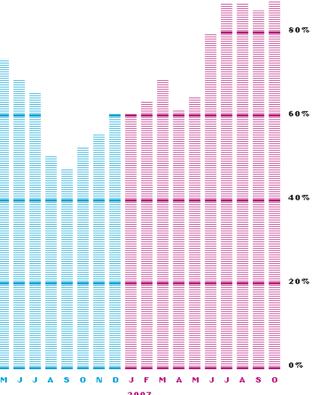 loading
loading
Light & VeritySpamalotYale's battle with junk e-mail  Chart: Mark Zurolo ’01MFA. Source: Yale ITS.Percentage of incoming e-mail identified as spam. View full imageYale's info tech office, like everybody else with an Internet connection, is locked in a never-ending battle with "Wilfredo Baxter," "Imogene Feliciano," and all the other pseudonymous purveyors of junk e-mail. Last October, almost 88 percent of e-mail addressed to Yale accounts was rejected as spam. Information Technology Services rejects messages from known spammers and scans the rest for viruses and for phrases characteristic of spam. (But scanners have their blind spots. Yale account holders still receive frequent messages advertising che*ap Vi*agra.) As quickly as ITS can install new spam-blockers, spammers adapt. In summer 2007, a major species of spam relied on PDF files to evade the scanners. But now that technology has been developed to screen it out, PDF spam is almost nonexistent. Yale enjoyed a brief dip in volume in the summer of 2006, when ITS stopped accepting "fuzzy matches" (in which the address doesn't quite match a real Yale e-mail address). But mostly, it just keeps going up.
The comment period has expired.
|
|